 W
WAcanthochirana is an extinct genus of prawn that existed during the upper Jurassic period. It was named by Strand in 1928, and contains five species, including Acanthochirana cordata. They are distinguished from the related genus Aeger by the presence of teeth on the rostrum, which are absent in Aeger.
 W
WAmphitheriida is an order of Mesozoic mammals restricted to the Middle Jurassic of Britain. They were closely related to the Dryolestids but possessed five molars instead of the usual four in Dryolestida,. The Amphitheriida contains one family, the Amphitheriidae.
 W
WAntrimpos is an extinct genus of crustacean which existed during the Triassic and Jurassic periods. It contains 15 species, including Antrimpos speciosus.
 W
WApiocrinites is an extinct genus of crinoid that lived from the Middle to the Late Jurassic of Asia and Europe.
 W
WBrachyopomorpha is a clade of stereospondyl temnospondyls within the infraorder Trematosauria. It was constructed in 2000 to include Bothriceps australis and the superfamily Brachyopoidea. It is phylogenetically defined as a stem-based taxon including Pelorocephalus and all taxa closer to it than to Rhytidosteus. In contrast, Brachyopoidea is defined as a node-based taxon including Brachyops and Pelorocephalus and all descendants of their most recent common ancestor. Because Bothriceps is not thought to be a descendant of that recent common ancestor and would be more basal than it, the genus is placed just outside Brachyopoidea and is considered to be a sister taxon to the clade.
 W
WChresmoda obscura is an extinct species of insects within the family Chresmodidae.
 W
WChunerpeton tianyiensis is an extinct species of salamander from the Late Jurassic Daohugou Beds in Ningcheng County, Nei Mongol, China. It is the only species classified under the genus Chunerpeton. It was a small animal measuring 18 cm in length.
 W
WCoptoclavidae is an extinct family of aquatic beetles in the suborder Adephaga. The Coptoclavidae lived from the Triassic to the Early Cretaceous. Coptoclavidae is a clade of Dytiscoidea. The increase in the teleost fish population and the competition of Gyrinidae and Dytiscidae is believed to have caused their extinction.
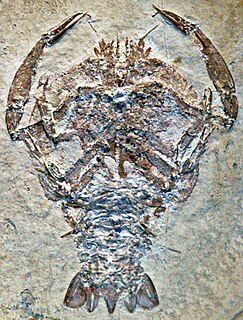 W
WCycleryon is an extinct genus of decapod crustaceans. The type species is Cycleryon propinquus.
 W
WDocodon was a mammaliaform from the Late Jurassic of western North America. It was the first docodontan cynodont to be named.
 W
WDrobna deformis is an extinct species of prawn, the only species in the genus Drobna.
 W
WEryma mandelslohi is a species of decapod crustacean that lived in Europe in the Jurassic of England. Fossils of the species have been found in the Oxford Clay.
 W
WEryma modestiforme is a species of decapod crustacean that lived in Europe in the Jurassic.
 W
WErymidae is a family of decapod crustaceans known only from fossils. They survived for 100 million years, from the Permo-Triassic boundary to the Hauterivian. Eleven genera are recognised:Clytiella Glaessner, 1931 – 1 species Clytiopsis Bill, 1914 – 3 species Enoploclytia M’Coy, 1849 – 20 species Eryma Von Meyer, 1840 – 44 species Galicia Garassino & Krobicki, 2002 – 3 species Lissocardia Von Meyer, 1851 – 3 species Palaeastacus Bell, 1850 – 24 species Paraclytiopsis Oravec, 1962 – 1 species Protoclytiopsis Birshtein, 1958 – 1 species Pustulina Quenstedt, 1857 – 12 species Stenodactylina Beurlen, 1928 – 1 species
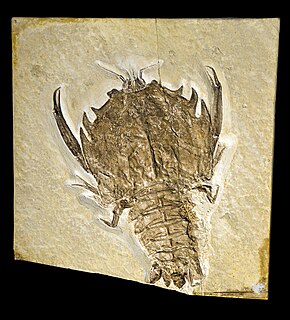 W
WEryon (animal), is an extinct genus of decapod crustaceans from the Late Jurassic of Germany. Its remains are known from the Solnhofen limestone. It reached a length of around 10 cm (3.9 in), and may have fed on particulate matter on the sea bed.
 W
WEryonidae is a family of fossil decapod crustaceans which lived from the Upper Triassic to the Lower Cretaceous. It contains four genera: An aggregation of three unidentified eryonids was reported in 2012 inside a Late Jurassic ammonoid of the species Harpoceras falciferum; they represent the earliest evidence of gregarious behaviour in decapods.Cycleryon Glaessner, 1965 Eryon A. G. Desmarest, 1817 Knebelia Van Straelen, 1922 Rosenfeldia Garassino, Teruzzi & Dalla Vecchia, 1996
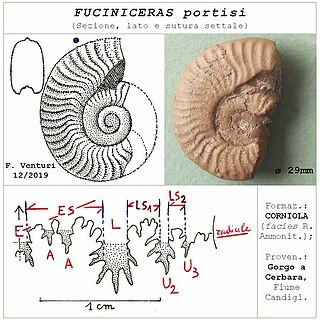 W
WFuciniceras is an extinct cephalopod genus included in the ammonoid family Hildoceratidae,, that lived during the Pliensbachian stage of the Early Jurassic. The shell of Fuciniceras is generally small, evlute, and strongly ribbed.
 W
WHyperlioceras is an extinct genus of cephalopod included in the ammonitid family Graphoceratidae that lived during the Bajocian stage of the Middle Jurassic. The type species is Hyperlioceras discites
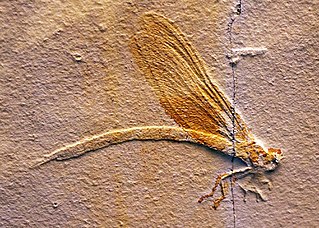 W
WIsophlebia is an extinct genus of fossil odonates belonging to the family Isophlebiidae.
 W
WLiaoxitriton is an extinct genus of prehistoric salamanders from the Mesozoic of China. It contains two species: L. zhongjiani, from the Early Cretaceous (Aptian) Yixian Formation, and L. daohugouensis, from the Middle/Late Jurassic Daohugou Beds.
 W
WLibellulium is an extinct genus of dragonfly from the Jurassic period known from fossil finds in Europe.
 W
WLichnomesopsyche is an extinct genus of mesopsychid mecopteran which existed in what is now China during the middle Jurassic period. It was found in the Daohugou Bed. It was named by Ren Dong, Conrad C. Labandeira and Shih ChungKun in 2010.
 W
WThe Mastodonsauroidea are an extinct superfamily of temnospondyl amphibians known from the Triassic and Jurassic. Fossils belonging to this superfamily have been found in North America, Greenland, Europe, Asia, and Australia. The genus Ferganobatrachus is included in this superfamily but not placed in any of the included families.
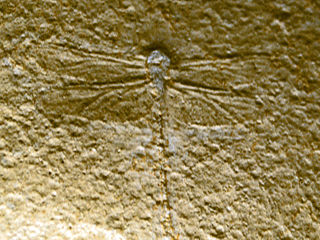 W
WNannogomphus is an extinct genus of fossil odonates belonging to the family Gomphidae.
 W
WNotobatrachus is an extinct genus of frog from the Middle Jurassic Cañadon Asfalto Formation, Cañadón Asfalto Basin and La Matilde Formation, Deseado Massif of Patagonia, Argentina. N. degiustoi is the most completely known Jurassic frog and has been recorded in many outcrops of the La Matilde Formation of the Deseado Massif in southern Patagonia.
 W
WPalaeontinoidea is an extinct superfamily of cicadomorph hemipteran insects. This superfamily contains three families.
 W
WPectinatites is an extinct cephalopod genus belonging to the order Ammonoidea, that lived during the upper Tithonian stage of the Late Jurassic. They were fast-moving nektonic carnivores.
 W
WPerisphinctes is an extinct genus of ammonite cephalopod. They lived during the Middle to Late Jurassic epochs and serve as an index fossil for that time period. The species P. boweni was named after the English chemist and geologist E. J. Bowen (1898–1980).
 W
WSteleopteron deichmuelleri is a species of extinct winged damselfly in the family Steleopteridae, which lived in modern Germany during the Upper Jurassic era.
 W
WTitanites is an extinct ammonite cephalopod genus within the family Dorsoplanitidae, that lived during the late Tithonian of the Late Jurassic.